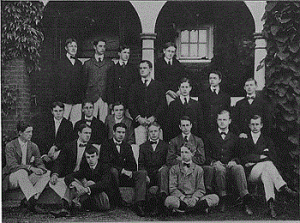The below post was originally written in January 2018.
Update — February 2021: Our hormones are out of whack. Sperm counts and egg quality have drastically worsened. Women reach puberty much earlier. Endocrine disruptors (in plastics and much more) may be to blame. Average sperm count levels in western countries have dropped 60 percent since the 1970s.
Update — November 2020: Hair loss epidemic in China fueling hair transplant boom. Especially among those born in the 1990s.
Update — July 2020: Increasing rates of hair loss at younger ages in South Korea.
Update — April 2020: A new CNN article analyzes the increasing rates of hair loss and balding in Asian men.
October 2019 update 1: Millennial Chinese men are going bald at younger ages. A number of such reports have come out of China in recent years, some of which I cover further below in this post.
October 2019 update 2: A new study from from South Korea suggests that overworked men are balding younger and faster. People in their twenties or thirties who worked at least 52 hours per week were twice as likely to develop alopecia in comparison to their lazier counterparts. It should be noted that stress has been blamed for hair loss many times in the past, so this is not an entirely new finding.
October 2019 update 3: Yet another new premature hair loss theory has came out and been widely covered by the global media this month. Apparently, worsening air pollution levels are causing higher rates of hair loss. I am not entirely sure if air quality is worse today than in the past. Factory emissions and car emission are certainly much cleaner compared to 50 years ago. However, at the same time, both human and car population levels are drastically higher in comparison to 50 years ago.
Fewer Balding Young Men in Old Photos
For many years, I have observed and felt that men are losing their scalp hair earlier than in past generations. Males 25 years and younger rarely seemed to go bald in the past, at least based on what one can see from older photos.
I have also noticed this increased hair loss phenomenon in younger women in more recent years. However, the generalized thinning type of hair loss in females is sometimes harder to notice from a distance.
My original observation regarding increased rates of hair loss in younger men was based upon three key factors:
- Seeing at least half the older men in my father’s and grandfather’s generations still having excellent hair in old age.

No bald young men among college graduates in 1900. Seeing old group photos of people from 100 or more years ago from around the world having very few balding people. Sometimes none. There are also rarely any obese young men in such older group photos.
- Noticing NBA basketball players going bald at much more rapid rates than in the past. Because fully shaved heads in the NBA have become very popular over the past three decades, this point is hard to prove and I could be wrong. Afro hairstyles have almost gone extinct, but is that purely due to fashion? Or also due to the fact that very few men can grow Afros when most have some degree of hair loss? A number of basketball players have discussed their hair loss openly in recent years. Some after shaving it, and others while trying to hide their hair loss like Lebron James. NBA players are also more muscular than in the past.
The second point above is all the more impressive when considering the fact that no-one in those old photos would have had a hair transplant at that time. Moreover, hairpieces would have been far more obvious in that era and easily noticeable.
In modern group photos, it is quite likely that at least one person in the group has a had a hair transplant; or is using a hairpiece; or is using a hair loss concealer.
For example, in recent US politics, Donald Trump and Joe Biden come to mind as men in the upper echelons of power having had some type of surgery to give them new hair. Both of them when appearing in group photos are deceiving us.
More Evidence that Men are Balding Earlier
My above three original observations were further solidified by several further developments during the past decade.
Around 10 years ago, my older female hairdresser told me that she was seeing many male high school children going bald. She said it was quite shocking, and in the past she rarely saw men younger than 21 with any significant hair loss. My hairdresser did not mention younger females having thinner hair at a greater rate than in the past. I think that premature hair thinning is also happening to females more frequently.
In more recent years, I have read a number of articles discussing how Japanese men were going bald at much greater rates than in the past. In fact, it seems like balding in your 20s and early youth was an exceedingly rare phenomenon in Japan prior to World War II.
Are Bad Diets Causing Increased Early Onset Alopecia?
A famous scientist by the name of Dr. Masumi Inaba published a famous book in 1985 in which he concluded that after World War II, Japanese men were going bald at a much more rapid pace. He postulated that this was largely due to a westernized high animal fat diet. This was adversely impacting hormones and sebaceous gland activity. It should be noted that average height in Japan as well as the rest of Asia has gone up with dietary changes over the past century.
Other studies have shown that Japanese men who move to the western world start balding more rapidly. Some people think that bad diets are causing excess inflammation in human bodies along with insulin resistance. Both of these can adversely impact scalp hair.
While researching this post, I also found a 1990 paper from the Netherlands that immigrant communities were experiencing higher rates of hair loss than in their home countries.
Other Theories on Premature Balding
There are many other theories besides dietary ones as to why premature balding and androgenetic alopecia rates are increasing at younger ages. You will find at least a few studies on the below highlighted factors correlating to higher rates of hair loss. However, none of these theories are set in stone or conclusively proven. In many cases, the hair loss due to any of the below factors is temporary.
Low Vitamin D Levels, Hormone Alterations, Chemicals and Stress
Some scientists think that low vitamin D levels can cause hair loss. This is especially true in northern hemisphere western countries with limited sunshine for months on end.
Historically, Caucasians have had much higher rates of male pattern hair loss in comparison to other races. In the modern day, lack of vitamin D has been further exacerbated by heavily indoor-based lifestyles worldwide. Direct sunlight is the ultimate and most natural source of vitamin D.
Yet other hypotheses have focused on changing hormone levels in humans due to various chemicals in our environment, food and water. This includes effects of birth control medications, pesticides, herbicides and more in the water that we drink.
Increasing stress levels in modern societies have also been used to explain higher rates of hair loss. Steroid, growth hormone and testosterone supplementation have all also been blamed for increased rates of hair loss. Especially among athletes and body builders.
Online pornography addiction has frequently been blamed for hormonal changes and hair loss. Although I doubt there are any studies on this sort of thing, it would not surprise me if porn addicts had altered hormonal makeups.
None of these theories are set in stone of course. Moreover, it has not even been proven that hair loss rates are definitely higher in the current generation than in past generations.
Will Evolution Make all Men Bald in Future?

Genetic theories on hair loss have focused on the fact that balding can be passed on from either side of the family. And it does not require both male grandparents to be bald for a male grandchild to also be bald. i.e., balding is a dominant trait and therefore likely to increase in each generation.
However, the genetics of male pattern hair loss are not so clear cut according to this article. On many online hair loss forums, people have joked in the past that the final step in human evolution is when everyone (or at least all men) look like in the above photo. So from an evolutionary perspective, it makes sense that each generation is balder than the prior one.
More Younger Chinese and Indians Loosing Hair
The reason for my writing this article is due to yesterday’s news from the South China Morning Post that a shocking 60 percent of university students in China were losing their hair according to one survey with 4,000 participants. Per Dr. Fu Lanqin:
“My feeling is that this generation is losing its hair sooner than previous generations.”
China is the world’s most populous nation, and historically, Asians lose hair at much lower rates than Caucasians. However, a 60 percent hair loss figure for young university students in China seems even higher than what we would see today in the western world’s colleges.
India is the world’s second most populous country. In recent years, a number of articles from that nation’s newspapers have mentioned increasing hair loss in younger people. One of the more interesting ones found that young Indian men from the IT sector were especially prone to balding.
Koreans Too
An article published in 2018 suggests that Korean men are also losing their hair at an earlier age than in the past. The usual reasons of bad diets, stress and sedentary habits are given for this increase in premature early onset balding.
It seems like whoever finally comes out with a hair loss cure will have an unlimited supply of young clients.